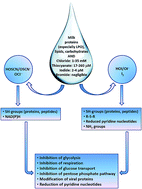Potential antiviral activities of camel, bovine, and human lactoperoxidases against hepatitis C virus genotype 4
Abstract
Illnesses caused by hepatitis C virus (HCV) represent a major threat in Egypt and worldwide since there are still no efficient protective vaccines against the HCV infection. A large number of patients use camel milk as an alternative medicine to control the HCV infection because of the high cost of the available standard therapy. Milk contains several proteins (including lactoperoxidase, LPO) with a broad spectrum of activity against pathogenic microorganisms and viruses. In this study, the effectiveness of human, camel, and bovine LPOs against HCV genotype 4 was assayed using the RT-nested PCR and real time PCR techniques. Pre-incubation of the HepG2 cells with human, camel, or bovine LPOs which were then infected with HCV failed to block the receptors of the virus on the cell surface. However, direct interaction of HCV with LPO at concentrations of 1.5 mg ml−1 led to a complete neutralization of the viral particles and prevented the HCV entry to the cells. LPOs were also able to inhibit virus amplification in infected HepG2 cells at concentrations of 1.25 and 1.5 mg ml−1 with a relative activity of 100%. The highest anti-infectivity was demonstrated by the camel LPO, which showed a neutralizing activity on HCV particles and inhibition of virus amplification at a concentration of 1.0 mg ml−1 with the relative activity of 100%. This is first report that evaluates the effectiveness of LPO in controlling HCV infectivity.

- This article is part of the themed collection: Coronavirus articles - free to access collection

 Please wait while we load your content...
Please wait while we load your content...